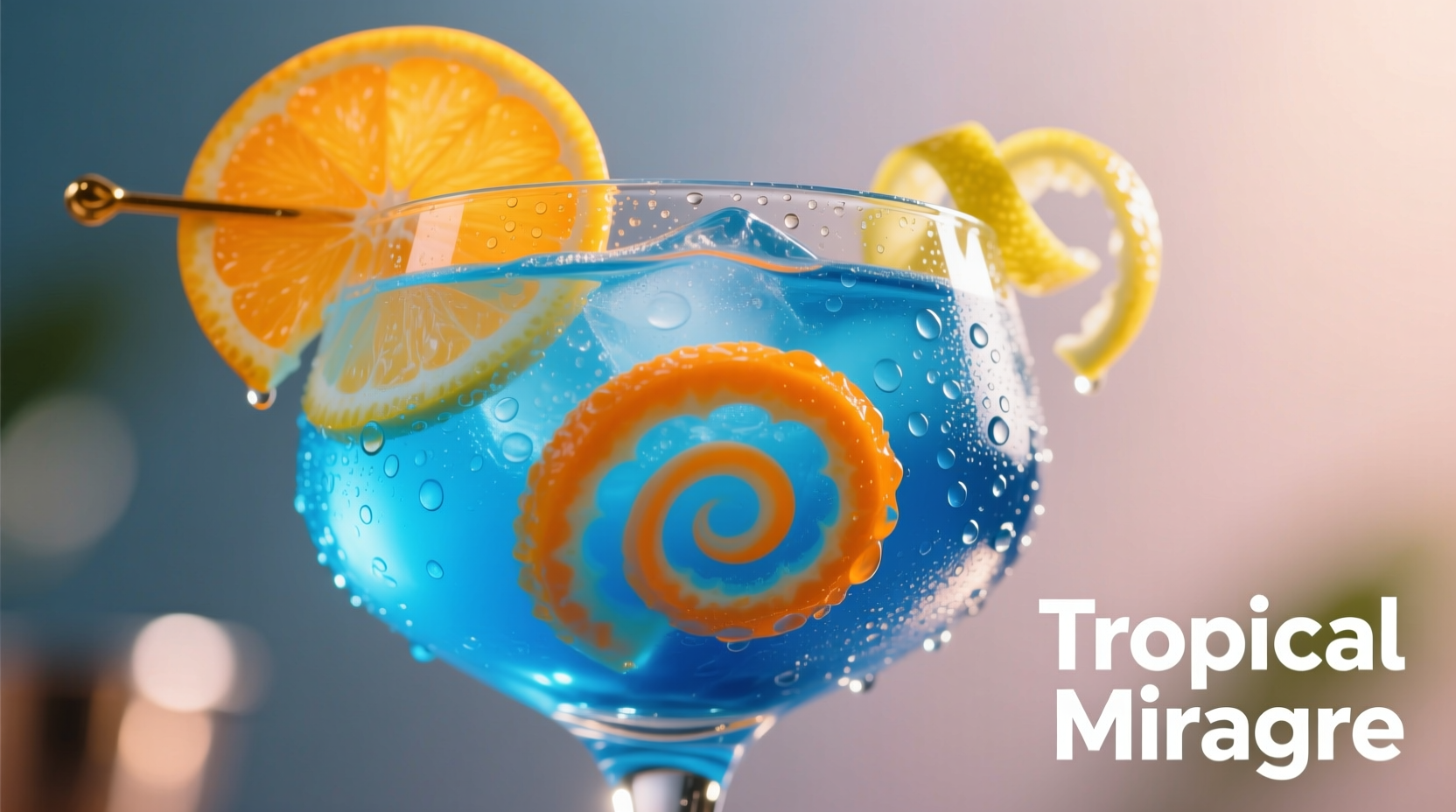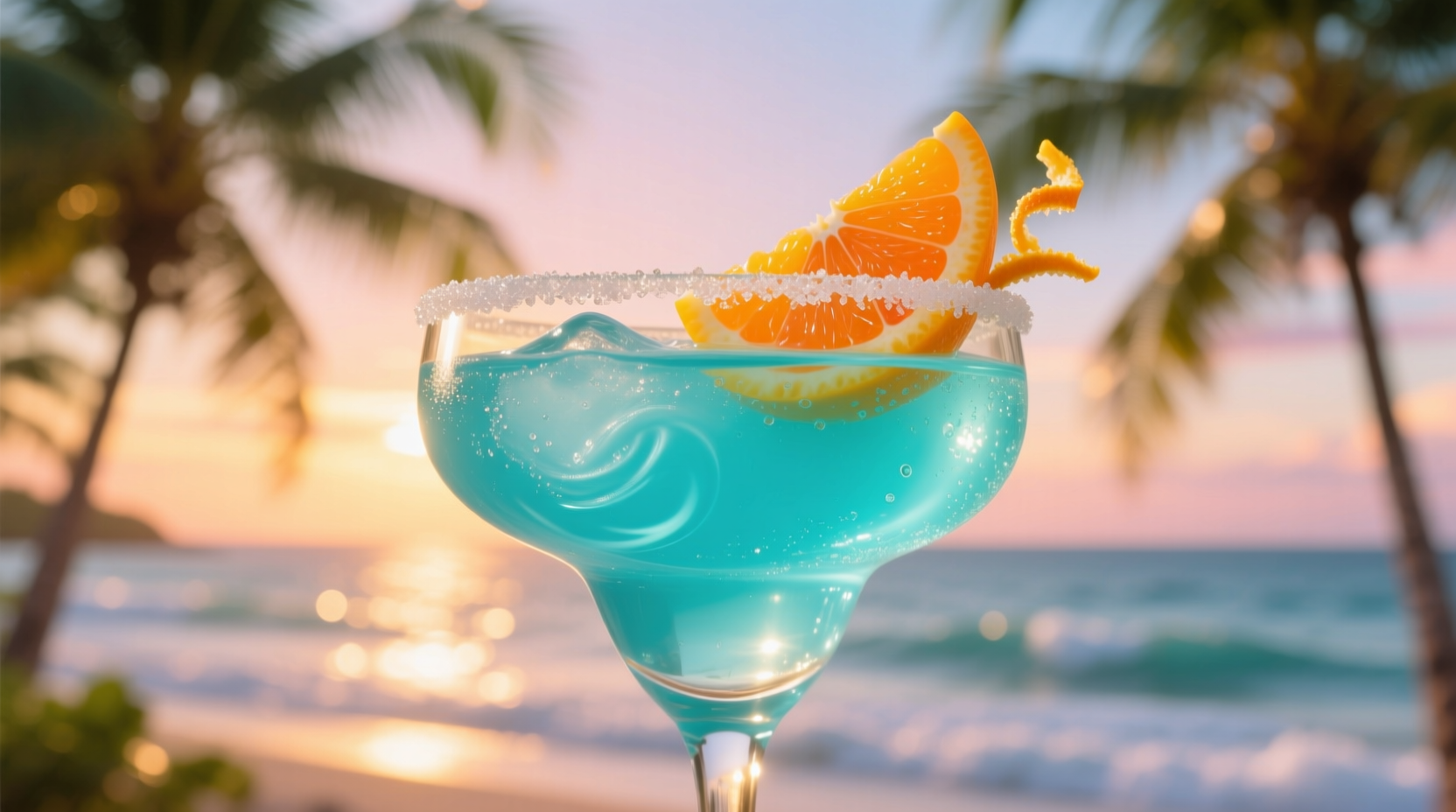Blue Curaçao tastes predominantly sweet and citrusy with strong orange notes, subtle bitter undertones from Laraha citrus peel, and a distinct artificial flavor profile due to added coloring. You'll discover exactly how it compares to other orange liqueurs, when to use it in cocktails, and why its flavor differs from natural alternatives.
If you've ever wondered what does blue curacao taste like when sipping that vibrant cocktail, you're not alone. This electric blue liqueur delivers an intensely sweet orange flavor with noticeable artificial notes, balanced by a subtle bitterness from the Laraha citrus peel used in traditional production. Unlike natural orange liqueurs, blue curaçao's flavor leans sweeter and less complex due to added coloring and flavor enhancers.
Decoding Blue Curaçao's Flavor Profile
Blue Curaçao's taste experience unfolds in distinct layers. The initial impression is overwhelming sweetness (typically 25-30% sugar content), followed by bright orange notes reminiscent of candied peel rather than fresh citrus. This is where its artificial character becomes apparent – the flavor lacks the nuanced complexity of premium orange liqueurs. Beneath the sweetness lies a subtle bitter undertone inherited from the Laraha citrus fruit (Citrus aurantium currassuviensis), a bitter orange variety native to Curaçao island that's too bitter for fresh consumption but perfect for liqueur production.
According to Difford's Guide, the flavor profile diverges significantly from natural orange liqueurs due to added food coloring and flavor stabilizers. While traditional curaçao uses dried Laraha peels macerated in alcohol, the blue version often incorporates additional sweeteners and artificial orange flavoring to maintain consistency despite the coloring process.
| Liqueur Type | Sweetness Level | Orange Flavor Notes | Bitter Undertones |
|---|---|---|---|
| Blue Curaçao | High (25-30% sugar) | Artificial, candy-like | Moderate |
| Triple Sec | Moderate (20-25% sugar) | Natural, fresh citrus | Low |
| Cointreau | Moderate (28% sugar) | Complex, balanced peel | Noticeable |
When Blue Curaçao Shines (and When to Avoid It)
Understanding blue curacao flavor profile helps determine ideal applications. Its intense sweetness and artificial notes make it perfect for:
- Tropical cocktails where sugar balances tart juices (e.g., Blue Hawaiians)
- Layered shots requiring vivid color separation
- Non-alcoholic mocktails needing visual appeal
However, professional mixologists like Antonio Rodriguez note key limitations: "Blue Curaçao's artificial flavor becomes overpowering in spirit-forward cocktails like Margaritas. For recipes highlighting nuanced orange notes, always choose clear curaçao or Cointreau instead." This blue curacao vs triple sec taste difference explains why high-end bars rarely use the blue version in serious cocktails.
Practical Usage Tips for Home Mixologists
Maximize blue curaçao's potential with these evidence-based techniques:
- Balance the sweetness: Pair with tart citrus juices (lime or lemon) at 2:1 juice-to-curaçao ratio
- Use sparingly: 0.5 oz provides sufficient flavor without overwhelming other ingredients
- Chill before use: Cold temperatures mute artificial notes according to Liquor.com's sensory analysis
- Avoid heat: Never cook with it – heat amplifies artificial flavors

Debunking Common Flavor Myths
Many believe does blue curacao taste like orange naturally, but research tells another story. The distinctive blue color comes from FD&C Blue No. 1, which interacts with flavor compounds during production. As documented by the U.S. Food and Drug Administration, this coloring agent requires additional flavor masking agents that contribute to the artificial taste profile.
Another misconception: "natural" blue curaçao exists. True natural versions (using butterfly pea flower) taste completely different – floral and earthy rather than citrusy. Authentic blue curaçao will always have that characteristic artificial orange note due to production requirements.
Creating Better Blue Cocktails
For genuinely delicious results with blue curaçao:
- Combine with pineapple and coconut cream for balanced sweetness
- Add a dash of orange bitters to enhance natural citrus notes
- Use fresh lime juice instead of sour mix to cut artificial aftertaste
- Shake vigorously with ice to dilute and integrate flavors
Remember that what blue curacao tastes like in cocktails depends entirely on your recipe balance. When used thoughtfully, it creates visually stunning drinks with crowd-pleasing sweet citrus notes – just don't expect the sophistication of premium orange liqueurs.











 浙公网安备
33010002000092号
浙公网安备
33010002000092号 浙B2-20120091-4
浙B2-20120091-4